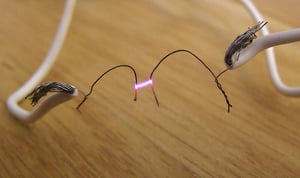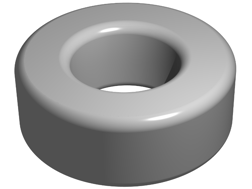Part 8 in a series of questions and answers from our Q&A webinars.
Q1. Are there any arcing or sparking concerns with AEGIS® Rings?
A1. Yes, arcing or sparking may occur. Because the shaft voltage is very low when it discharges through the ring, these will be very low-energy arcs, but they may still be a problem in Class I Div 1/Div 2 environments. Underwriters Laboratory (UL) has an approved set of procedures for installing an AEGIS ring inside an explosion proof motor for Class I Div 1 environments. Some motor manufacturers, like Marathon and WEG, offer XP motors with AEGIS. And there are several motor repair companies that are approved to install AEGIS in an XP motor.
explosion proof motor for Class I Div 1 environments. Some motor manufacturers, like Marathon and WEG, offer XP motors with AEGIS. And there are several motor repair companies that are approved to install AEGIS in an XP motor.
To date, NEMA & IEEE have not approved any shaft grounding device for use in Class I Div 2 environments. (Using an XP motor would usually be considered overkill.) But an IEEE task group has been researching this, and we are confident that it will change in the near future.
Q2. The AEGIS Handbook talks about measuring shaft voltage on ac motors. Does this measurement also work for dc motors?
A2. Yes, the testing works exactly the same. The waveforms may look different, because dc drives may use a different modulation scheme. And the shaft voltage is often lower on dc machines than ac induction motors, but the risk of electrical bearing damage is still there.
Q3. How do AEGIS rings compare to common mode cores on large machines?
A3. In ac motors over 100 hp, they work well together. AEGIS rings protect against shaft voltage discharge through the bearings. This is caused by the common mode voltage of the drive's output. Shaft voltage discharge is a problem is all ac induction motors on drives, regardless of size. There are filters that can reduce common mode voltage, but they are expensive and rarely used.
Common mode cores, or inductive absorbers, filter out much of the common mode current in the drive's output. Common mode current causes rotor ground current in poorly-grounded motors, and high frequency circulating current in motors over 100 hp (75 kW). So these cores protect against those two modes of damage, but cores do not protect against shaft voltage discharge, the major source of damage in small well-grounded motors. In fact, research suggests that installing improperly sized cores can made shaft voltage discharge damage worse.
In larger motors, we recommend installing an AEGIS Ring at one end, and some type of insulated bearing at the opposite end. The AEGIS Ring discharges shaft voltage, and the insulated bearing blocks circulating current. This is all the protection a well-grounded large motor needs. If the motor frame is not well grounded, you can use high frequency grounding straps to protect against rotor ground current.
Common mode cores can filter up to 65% of common mode current. Although we recommend one grounding ring and an insulated bearing, you could probably use one AEGIS Ring and appropriately sized cores. The ring would protect against discharge current, and the cores would decrease circulating and rotor ground current. Would cores decrease the common mode current enough, so there was no damage from circulating and rotor ground current? Maybe, maybe not. AEGIS used with cores may not be as good as using AEGIS and an insulated bearing, but it's definitely better than nothing.
Q4. Do servo motors have problems with bearing currents?
A4. Yes and no. We've had multiple servo users report bearing fluting, but to date, no servo manufacturers have acknowledged this problem. Another challenge is that with servo motors, there's no empty space: the case is filled with motor. But we do know of motor repair companies who install AEGIS rings on the outside of servo motors.
![]()
AEGIS Rings also come with a 2-year extended warranty against bearing fluting damage. No other form of protection against VFD-caused bearing damage offers a warranty like this.
![]()
To learn more about AEGIS shaft grounding and best practices for electrical bearing protection, sign up for a training. We offer monthly live training webinars, and - pandemic situation allowing - we can also visit your site and give an in-person training, with an emphasis on your specific needs.

